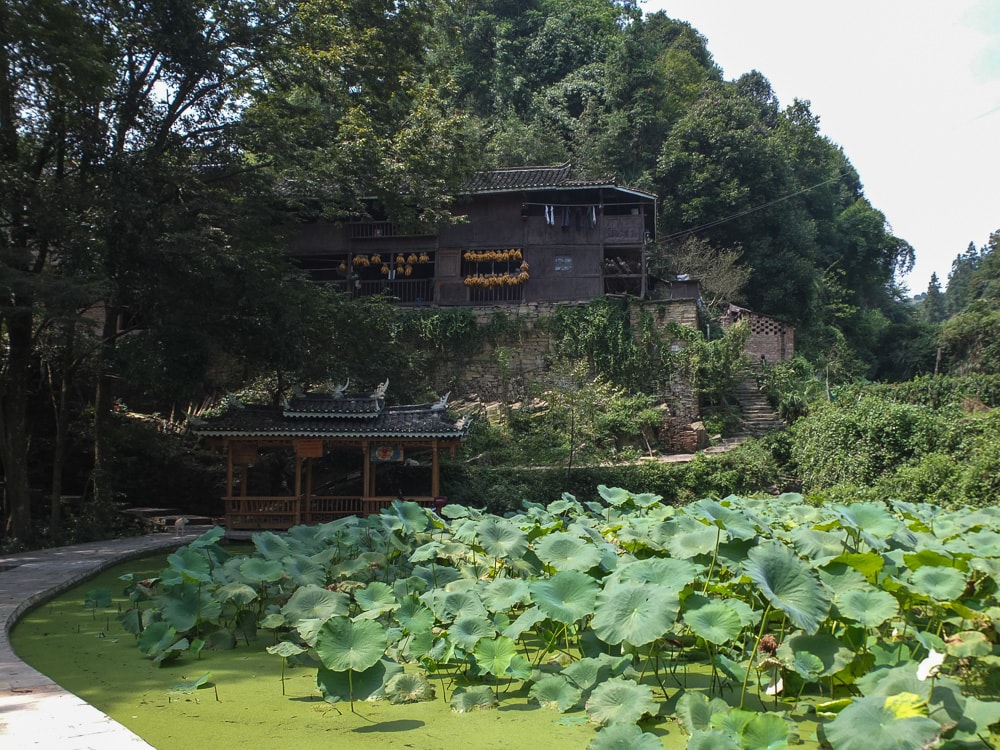China’s Miao ethnic group has an obscure history owing to its lack of written language, but their textile traditions have survived many years of migration and dislocation. Miao heritage crafts are an integral part of their culture, and have survived largely because these textiles are the primary communication tool between generations, serving as a record of cultural history and a source of ethnic identity.
Miao people are scattered across Guizhou province in southwest China and each geographical area has adopted its own unique traditional dress. There is a saying that goes: “If you meet one hundred Miao, you will see one hundred different costumes.”
There is one garment that almost all Miao women have in common: the indigo-dyed pleated skirt. Read below to learn how these skirts are made as described by contributor Sharon De Lyster, the founder of Narrative Made, a Hong Kong-based womenswear brand focused on heritage textiles. Shop Sharon’s capsule collection of Narrative Made pieces for The Kindcraft at the end of this story and in our shop featuring Miao pleats and other handcrafted details.

The making of the pleated skirt
Methods of making the pleated skirt vary from region to region. Each community’s skirt is a reflection of the surrounding environment from the availability of dyeing ingredients, choice in surface treatments, to the set-up of the pleating process.
Shidong town is known for making flawless satin stitches and garments heavily adorned with silverware. On a recent visit, I met pleating expert Kai Jin (pictured below, left) who showed me their local hand-pleating technique.
In this town they use a barrel as a pleating platform. Cloth is wrapped around a barrel, secured with ropes, and then dampened with water from a straw brush. Pleats are made by pinching the cloth with a long pin. Once the pleats are made, ropes are firmly tied around the barrel to secure the pleats into place. The cloth is left to dry for several days before the ropes are removed and the fabric is unwound. Later, a waistband is stitched onto the skirt fabric which requires the craftsman to carefully pick up the peak of each fold and then stitch it into the waistband. Finally, the skirt is rolled up tightly and bound with a cloth rope, setting the pleats firmly into place.

Decoration of the pleated skirt
In Shidong, a ribbon with three red lines is sewn onto the fabric before pleating. Older generation recall that the three lines represents three rivers in China: the Yellow River (Huang He), Yangtze River (Cháng Jiāng), and Qingshui Jiang, which starts from Southeast part of Guizhou province.
In Gedong, pleated skirts worn by girls between the ages of 17 and 20 are decorated with a handwoven silk panel with striped pattern, which is attached before the pleating process. It is then decorated with a cross-stitching motif that depicts human figures on horseback crossing a bridge. This community chooses to pair this signature skirt with a red-and-white densely embroidered top to signify the youthfulness of the girls who wear them.
In nearby communities, girls wear a smocked mini skirt made from a striped panel (above) decorated with colorful embroidery. Pao Sang (pictured above) and her husband Wan Tu have been serving their community for several decades by making traditional costumes for special festivals. Pao Sang weaves the striped silk materials by hand while Wan Tu handles the smocking.

From one Miao community to the next, there are many different styles of indigo-dyed pleated skirts. Variations occur in material choices, dyeing and the shade of indigo blue, the degree of sheen, and surface decorations like embroidery. Each community’s traditional skirt reflects the necessary adaptations that have evolved over time in response to changes brought-on by migration, climate, or time. For the Miao, these textile traditions provide a visual record of their history where no written one exists. They are a people who have managed to preserve their cultural identity and customs.
Miao’s ancient textile-making traditions are relevant to today’s aesthetic. Narrative Made is one of the fashion brands championing Miao’s heritage fabric, featuring Miao hand-pleating techniques in their first collection. Narrative Made is about exploring heritage textiles and connecting the makers with the buyers. The brand features heritage handmade crafts and naturally-dyed materials from around Asia with a mission to preserve traditional crafts and to produce clothing that empowers marginalized artisans and their communities.
[button color=”white” size=”normal” alignment=”center” rel=”follow” openin=”newwindow” url=”http://shop.thekindcraft.com/collections/narrative-made”]Shop the Collection[/button]
Shop Narrative Made’s capsule collection for The Kindcraft – and don’t miss a Miao pleated skirt, the padded indigo-dyed jacket, and handcrafted scarves.




















